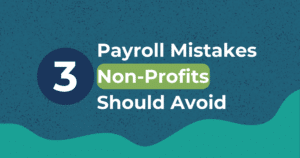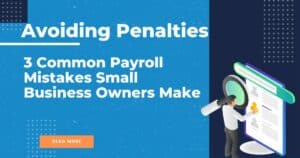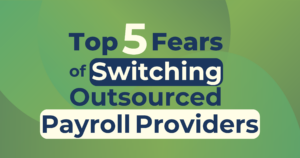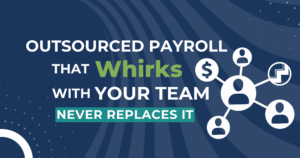Once upon a time, employees arrived at work, pulled a paper card from the wall file, and fed it into a time clock that punched or stamped the date and time of arrival or departure. And before the punch time clock was invented, Fred Flintstone would yank a prehistoric bird’s tail, which would scream, signaling the workday is done.
But now we live in a Jetsons kind of world. Granted, we still don’t get to travel via flying cars, and no one except Jeff Bezos has a robot maid, but employees work remotely thanks to the internet and wi-fi.
Some employees create presentations, write proposals, or develop apps all across the world while working for a company in Cleveland, Ohio. And some time-honored professions like plumbers or construction workers, who have always worked off-site, can track their employees’ work time through the same futuristic internet.
But with plumbers repairing broken pipes across town or computer programmers working while on a trip to Rome, the classic punch time clock has gone the way of the Flintstones and the dinosaurs: extinct.
No matter where your employees work, business owners need to be able to track where their workforce is while they work. Regardless of the size of your organization, most of your budgeted expenditures go toward labor.
Business owners must get a handle on their employees’ time and attendance from day one, or things will get out of hand. This article will help you build a time and attendance policy and system that’s streamlined, enforceable, and allows you to keep track of all your employees in on digital space.
1. Establish a Companywide Time and Attendance Policy
Every business owner views their employees’ arrival times, workdays, and sick time differently from their competitor, neighbor, or partner, so each company will vary in how they choose to enforce a time and attendance policy.
Consider your company culture: how your managers view time and attendance will provide a ton of guidance on how to build your policy.
Tips for building a fair and enforceable policy:
- Keep things simple. Stick to common topics and define expectations.
- Include realistic disciplinary actions for each scenario.
- Communicate the policy to your employees and get them on board.
- Be consistent throughout the process for every employee.
2. Choose the Time and Attendance Software that best fits your business.
Time and attendance software systems are used to track and monitor employees’ start and stop work times. These digital systems enable employers to monitor their employee’s working hours, late arrivals, early departures, breaks, and absences.
When choosing the software package that works best for your business, consider each of these factors:
- Affordable and convenient
- Required hardware
- Allows employees to clock in anywhere
- Employee self-service feature
Select time and attendance software that best fits your needs. It will save you tons of time (pun intended) and headaches down the road. The software should be easy to use and smart enough to understand your industry’s unique considerations, regulations, and workflow.
Below are some of the industries that would most benefit from a solid PTO policy and time and attendance software:
Food and Beverage
Service-based businesses rely heavily on scheduling. Shorthanded shifts diminish customer experience and decrease profit. Tipped workers compete for lucrative weekend dinner shifts.
But what happens when you don’t schedule equitably? You will have angry servers and unhappy customers.
Savy software can pinpoint attendance trends before they cause problems, minimize payroll errors, and assist in shift trading to prevent coverage gaps.
Healthcare
Healthcare employees typically work long shifts that span two calendar days. A time and attendance system should be able to handle numerous job codes for various medical certifications.
Time and attendance software for the healthcare industry must be able to track shift differentials, sick leave, and provide a mobile application with GPS for off-site employees.
Hospitality
Within the hospitality industry, there is a high degree of pay variation. Plus many employees, like the cleaning staff, have little supervision which creates time theft vulnerability.
Hotel managers must-have software that maintains pay-rate codes, allows schedules to be adjusted in real-time and checks schedule conflicts at a glance.
Retail
This industry suffers from wild seasonal swings. Staffing for holiday and end-of-year sales add pressure to already overwhelming scheduling tasks. You can’t have customers leave the store unhappy because your employee says, “I don’t know. It’s my first day.”
Big box stores kicked off a trend of earlier opening hours and later closing times, which adds to the challenges of scheduling and compliance.
For a retail business, time and attendance software must have 24/7 oversight capabilities, a mobile app allowing employees to clock in digitally, and a scheduling enforcement tool that prevents overpaying for labor.
3. Create an Implementation Plan.
Start by outlining the steps needed to set up the system, such as installing software, exporting data from your old system, and preparing your staff. Your software provider will most likely provide you with an implementation list. If not, ask them for a step-by-step guide.
Transparency and thorough communication with your employees can help you avoid resistance when integrating the new attendance system. Explain that switching to an automated attendance system will make tracking time easier, and it will ensure they are paid on time and in full.
1. Educate
In addition to opening communication channels, it’s also beneficial to educate your employees on the new system. Take some time to show your workforce how the new attendance system works and answer their questions. A quick overview of the basics can go a long way in removing barriers and alleviating problems before they start.
2. Run a Pre-Launch Test
A sound implementation plan includes a test run. Ideally, employees clock in on both the new and existing time tracking systems during the test period. Then run parallel payrolls to ensure all bases are covered. This way, necessary adjustments can be made before you flip the switch.
3. Review and Evaluate
Ask for feedback from the employees using the newly-implemented software.
The new software should meet the goals set out early in the process, be accessible to all employees, and be easy to use.
4. Enforce the PTO Policy. No exceptions.
It is critically important from the beginning to set the expectation that the time and attendance policy applies to ALL employees, including leadership.
Managers must lead by example and enforce the policy from the top down. Encourage managers to walk around the office periodically and casually check in with the team and see who’s there.
Enforcing a new or updated policy comes down to trust and respect. Assume your employees will act like professionals, but be intimately familiar with the process if and when they do not.
A time and attendance policy is essential, but for it to be effective and enforceable it must be in writing, understandable, and acknowledged by all employees.
Tracking employees through space and time
Off-site and remote workers have pushed the need for mobile timekeepers into the future. Punch-card time clocks can no longer keep track of our employees. And maintaining paid time off, attendance, and overtime on paper takes way too long.
Business owners must create time and attendance policies to suit their current and future workforce. And implementing software to track employees’ work time, and allow them to “clock in and out” anywhere they are working streamlines your back-office processes and increases employee engagement.
At Whirks our employees work at our main office in Memphis and remotely from Texas, Arkansas, and Florida. We have struggled with keeping up with our in-person and remote employees’ time, attendance, and paid-time-off. But we’ve conquered that challenge with robust time, attendance, and PTO software, and are ready to help you do the same.






